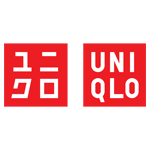Recruitment is very challenging and always evolving. Companies depend on HR to get the best talent. Recently LinkedIn published a report about the Future of Recruiting. The report outlines the 7 predictions on how the role of recruitment will change.
I went through the report and found it very insightful. There are 3 main areas across these predictions. The role of recruitment is changing. Technology tools will be important. The skills needed in recruitment are expanding.
Although there are 7 magnificent predictions in this report by Linkedin, I will only cover 4 in this blog post.
1. Recruitment will be mission-critical
Why does recruitment matters?
The impact of talent is growing. The stakes of making the right hire are rising.
As automation progresses, jobs are getting less repetitive and more creative. That doesn’t just mean more interesting jobs—it also means that talent will make a bigger business impact than before.
As jobs become more creative, recruiting will become more and more valuable —and business leaders will take notice. With their attention turning to you, now is the time to ask for the right resources and rethink how you manage your team
“Competition for top talent has gotten fiercer, so recruiting has taken on a new urgency” as mentioned by John Vlastelica (Managing Director at Recruiting Toolbox).
“Competition for top talent has gotten fiercer, so recruiting has taken on a new urgency”
John Vlastelica - Managing Director at Recruiting Toolbox Tweet
Recruiters are in high demand. The demand for recruiting professional is increasing (63% in the US since 2016).
So what can you do to rise to the occasion?
- Start capacity planning. With demand for recruiters on the rise, take stock now and see if you’ll need to hire more recruiters to meet your company’s future hiring needs. Learn how LinkedIn’s talent acquisition team predicted hiring demand and staffed recruiters accordingly.
- Rethink recruiter retention. Only 34% of recruiting professionals surveyed said that retaining top recruiters would be a major priority over the next 5 years.
- Build a strong business case. You have the business’s attention—take advantage of that. Whether you need headcount, technology, or other resources, make a clear ask and create a 5 year plan.
2. Recruiters will be more like Business People & less like Sales People
More than 1 in 3 recruiting leaders did not come from an HR role.
Recruiters are moving from tactics to strategy, to finding solutions, not just following plans.
It’s one thing to execute a plan, it’s quite another to design the most effective plan. More and more, companies are looking for recruiters to do both. For too long, many hiring managers treated recruiters as order takers. In the future, recruiting will increasingly be recognized as a strategic role.
“Currently, managing recruiters is like managing superstar sales people. Everyone is highly specialized and has a very specific purpose. In the future, they’ll be more well-rounded and analytical—more like business people."
Akarin Phureesitr - Head of HR at Central Group - Thailand Tweet
Recruiters’ jobs are growing more creative, too.
The function will become less about execution and more about talent strategy. Recruiters will have to anticipate needs, solve problems, and spot opportunities for hiring managers and their teams.
3. Metrics will track outcomes, not just actions
Metrics will move to strategic measures. Tracking actions is easier, but fails to capture the business impact.
Quality of hire is the most useful metric, but it’s not the most used.
Tactical metrics — like time to hire, candidates per hire, or offer acceptance rate—track the immediate actions of your recruiters. That’s a good starting point, but the future of recruiting will revolve around strategic metrics: those that measure the business outcomes of your team’s efforts—not just the actions they take.
“The fastest hire isn’t the best hire, and the cheapest hire isn’t the best hire. It’s all about the result — the business impact.”
Ross Baron - Head of Recruiting for Western Europe at TikTok Tweet
Results-based metrics will rule the future.
The two most impactful metrics of the future are both strategic, results-based measures. Quality of hire and sourcing channel effectiveness—a measure of which sources produce quality hires—both account for the business impact of the people your team is bringing in.
Quality of hire is the Holy Grail. The reason quality of hire is so valuable is the same reason why it’s notoriously difficult to measure: it speaks to the long-term business impact of new employees—and your recruiters.
The bigger blocker is the fact that most aren’t sure how to measure or define “quality.” There’s no single calculation, but most businesses define quality of hire as some combination of three core metrics: retention, engagement, and performance ratings.
Employee retention, engagement, and performance have been traditionally in the domain of Talent Development and not Recruitment. This is changing. Finding an effective strategy and tools will also be critical. Learn about a platform in the Philippines that can help with all three areas.
4. Tech tools will unleash your team’s massive potential
The most effective way to boost recruiter performance is through better tools and technology.
Technology could be the key to upgrading your team. The most impactful recruiting technologies are:
Tips on choosing tech:
- Ask your recruiters what they need. Whether by surveys, meetings, or informal chats, don’t forget to start at the source: the people who will actually be using the technology every day. Ask them about the most frustrating challenges they face and what tech they think would help them the most.
- Choose tech not just for recruitment but also for talent development. The two areas will now have to collaborate and partner more closely. Consider a platform that can be easily integrated with other systems and used for employee engagement and performance development. This is one area CARROTS PH can be of great help.
Additional tips and ideas to consider are:
For implementation, involve end-users early. “If you want the implementation to go well,” she says, “you must — must — have your end-users at the table at every step of the process where they can add valuable input.
Overall, most HR specialists consider digitizing recruitment as an essential part of their hiring strategy: as it brings performance, accuracy and efficiency.
A noticeable and growing trend in the recruitment sector has been the adoption of AI & automation.
Recruiters who strategically integrate automation in their hiring will be able to attract better talents, improve their quality of hire and reduce the time to fill a position. GrabJobs has made this its mission by providing cost-efficient automation tools to hire better, and faster.
More importantly, recruitment technology will be the key to allow recruiters to focus on their core tasks, while being able to adapt to new emerging trends.
Final Thoughts
The recruitment space is constantly evolving across all industries, and companies are seeing a crucial need in establishing dedicated recruitment teams for adapted growth.
LinkedIn mentions in its report: “preparing today will leave you better equipped for whatever the future holds“.
I would like to pose a question (might be an interesting topic for a webinar). Once you have invested time, effort, and money to recruit talent, how do you ensure you keep them?
Hope you found these predictions interesting. If you would like to see the full report you may download the complete 65-page Linkedin report here.























